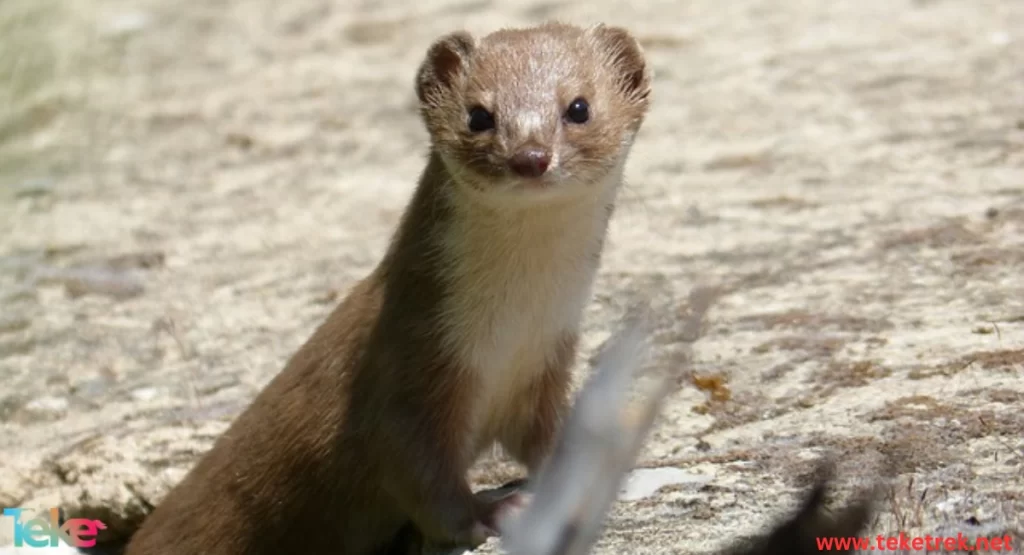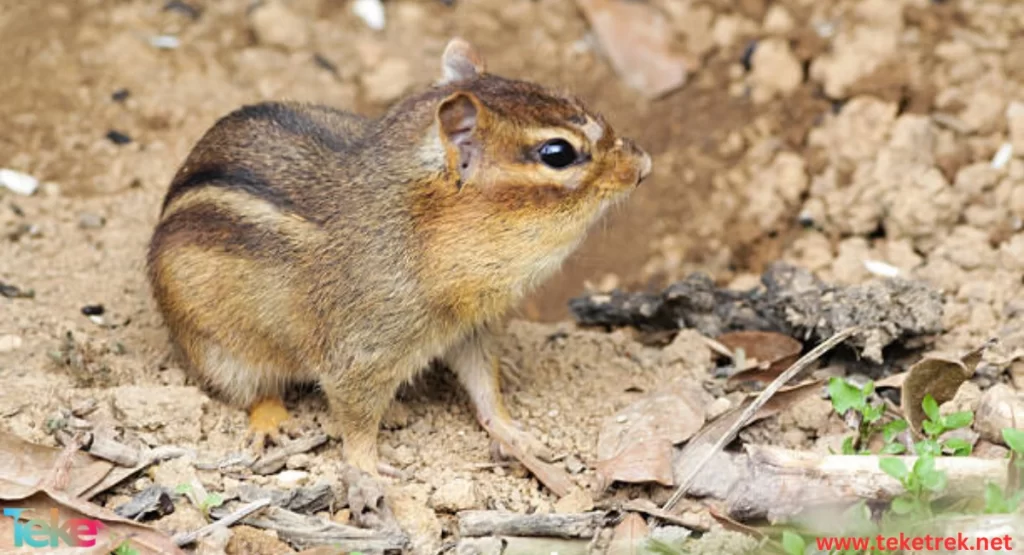The Yellow-bellied Weasel also known as the Mustela kathiah, is the smallest carnivorous mammal in Europe.
It is often referred to by various names such as “son of a weasel,” “scurry,” “rogue,” or “snakeroot.”
Let’s learn more about it from teketrek.
The Yellow-bellied Weasel’s specification
The color: The name “Yellow-bellied Weasel” comes from its dark yellow belly, while its upper parts are dark chocolate brown.
The edges of its upper lip, chin, and throat are a light yellowish-white color.
The length: The tail is more than half the length of the head and body, sometimes almost two-thirds.
The head and body length of the Yellow-bellied Weasel is approximately 25-27 cm, with a tail length of 12.5-15 cm
The feet: Its feet are well-developed and hairless on the undersides of the hind feet. The Yellow-bellied Weasel has five-toed feet with sharp, curved claws.
The weight: weight of around 1.56 kg.

Facts and behavior of the Yellow-bellied Weasel
When sensing danger, it releases a foul-smelling fluid from glands located near the base of its tail, earning it the nickname “stinky animal.”
A common myth in southern Greece suggests that the smallest Yellow-bellied Weasel was a human bride unhappy with a bitter animal that always tore the wedding dresses of other brides out of envy.
The Nepalese kept them to eliminate rodents in their homes, and they were also trained to attack larger animals for example: geese, goats and sheep for sport.
The Yellow-bellied Weasel has a sinuous line separating the brown fur on its back from the lighter fur on its belly.
Due to its agility and maneuverability, it can easily chase prey into narrow burrows, run, climb, and dive skillfully.
The weasel’s light voice is barely audible in noisy surroundings.
It moves on the ground by smoothly leaping in a series of short hops, stopping occasionally to survey its surroundings.
Yellow-bellied Weasels are known to travel up to 2.5 kilometers in search of food.
They tend to make their homes in tree trunks or burrows, creating nests from leaves and grass.
Where do yellow-bellied weasels live
The Yellow-bellied Weasel inhabits pine forests and is also found above the timberline at elevations of 1800-4000 meters.
It is found in Bhutan, China, India, Laos, Myanmar (Burma), Nepal, Pakistan, Thailand, and Vietnam.
It has also been spotted in Asia, Eurasia, Europe, and North America in forests and open wooded areas.
The Yellow-bellied Weasel is active both day and night.
It does not dig burrows but instead sneaks into burrows dug by rodents underground in search of food and for shelter from dangers.
What do yellow-bellied weasels eat
The Yellow-bellied Weasel feeds on birds, mice, rats, field mice, and other small mammals, making it a carnivorous animal. When food is scarce, it supplements its diet with birds, eggs, reptiles, and fruit.
Reproduction of the Yellow-bellied Weasel
After a gestation period of about five weeks, the female gives birth to one or two litters per year, with three to nine offspring per litter.
The young grow rapidly and are weaned at four weeks.
They are nursed for three to six weeks.
They are born blind and only open their eyes in the fourth week.
After leaving the nest, they are capable of hunting and killing prey.
Around 8 weeks old, they usually accompany their mother on hunting trips and quickly learn to hunt before dispersing.

FAQs about the Yellow-bellied Weasel
How long does the Yellow-bellied Weasel live?
The Yellow-bellied Weasel lives between 7 and 10 years.
What is the hunting method of the Yellow-bellied Weasel?
The Yellow-bellied Weasel uses its sense of smell and sight to track prey, then pounces on it and kills it with a fierce bite to the neck. It begins eating from the head, enjoys its meal for about ten minutes, rests for a few hours, and then continues its meal.
What animals does the Yellow-bellied Weasel prey on?
Foxes, cats, polecats, and weasels.
What do yellow-bellied weasels eat?
Yellow-bellied weasels eat mostly rodents such as mice, rats, and voles.Pacman frogs will also eat birds and small mammals in addition to their primary diet of insects.
In conclusion, it is important to note the significance of this species in achieving environmental balance. Its benefits include its ability to control nuisance and harmful rodent populations, which are a problem in urban areas. We hope that we have provided you with useful and valuable information and fascinating facts that help you learn more about the Yellow-bellied Weasel.
References
Wikipedia





